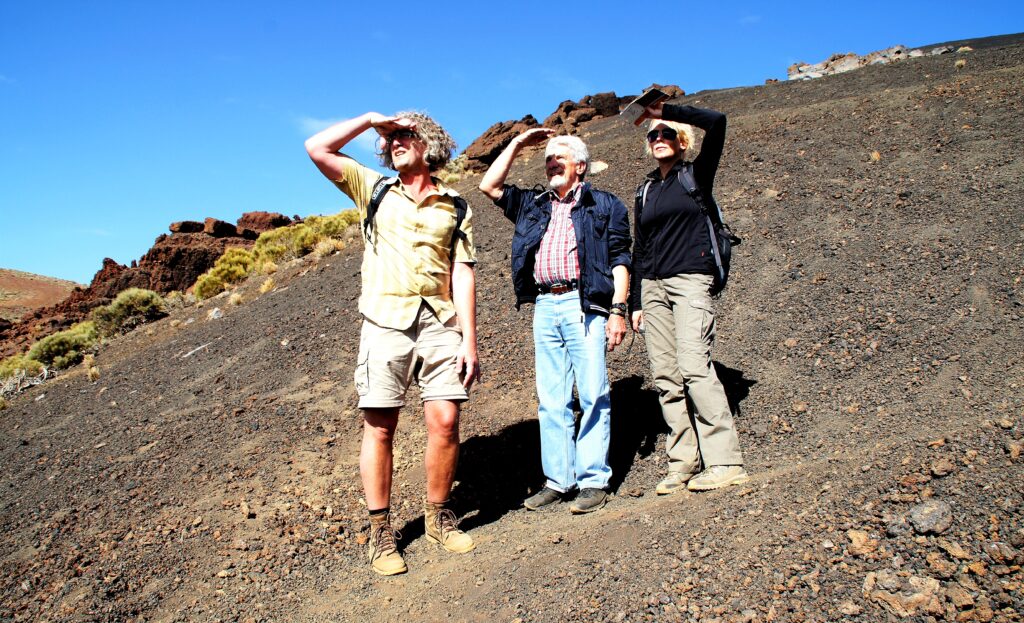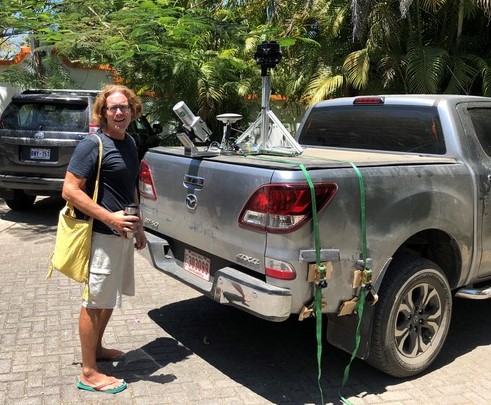Silke Kämmerer’s address on the occasion of receiving, on behalf of Dr. Martin Isenburg, the Lidar Leader Award for Outstanding Personal Achievement in Lidar, during the Geo Week conference, Denver, 7 February 2022
Martin was known as the creator of LASzip and LAStools. His LAZ format has become an industry standard, supported by virtually all existing point-cloud processing tools. Sometimes, we view tools as just some code that magically performs the task at hand. Martin reminds us, that behind each code, each tool, and each project, is a person and a story.
The history of LAStools goes back to 2007. In support of his research as a postdoc at UC Berkeley, Martin wrote code and some simple tools to read lidar data from LAS files. He zipped a folder called LAStools and put the code on his website. Others found it, reported bugs, requested features, and it became his hobby to maintain the code. He also added the ability to compress LAS files into LAZ files that were as much as 12 times smaller.
In 2010, Martin’s life took a dark turn. He fell into a manic episode that lasted for several months. He had obsessive plans, lost his self-control, and offended his co-workers at the US-government lab where he was working. He was fired, lost his immigration status, and was deported to Germany. With few prospects beyond the software and the techniques that he had pioneered, he started programming the LAStools software suite. The circumstances under which he had been fired and deported certainly added extra motivation. Later, Martin even said that it was fortunate that he lost his previous position, as this allowed him to put his focus on much more fulfilling work.

After his repatriation to Germany in 2010, Martin was productive but yearned for sunshine. The gray Bavarian winters depressed him, so in spring 2012 he traveled to Tenerife with his father, Dieter, and Silke, to conduct fieldwork on the Teide volcano and collect data to test the LAStools software suite he was developing at the time.
In 2012, Martin founded his company rapidlasso to distribute his software. He grew the company by adding new features to the software and conducting workshops at universities, research institutes, private companies, and government agencies around the world. He spoke at countless conferences and conventions, provided his opinion and expertise for articles and podcasts, and served on advisory boards.
Martin loved teaching as much as writing software. He enabled countless young lidar scientists and users to understand lidar in all its aspects. His dedication to share his knowledge, especially among students and young professionals, will be part of his impressive legacy. Through his LASmoons program, he gifted access to the full version of his software to many meaningful projects.
Martin travelled the world, enjoying teaching, coding, hiking, and surfing. Rarely seen without his coffee mug in hand, he also campaigned to switch away from single-use plastic and was successful in raising awareness and changing practices.
Beyond being a gifted software developer, Martin was very aware of our impact on the planet. He had great respect for nature, animals, and the environment, and he was vocal about conservation and preservation. He cared not only about technology, but also about the potential of technology to improve our environment and the human condition. He talked about reducing the carbon footprint of computing before almost anyone else. The carbon footprint he saved by giving away LASzip and LAZ will be a lasting impact.
Martin was a tireless advocate for open data and for the peaceful use of this data. He had a keen mind and steadfast positions on issues. He was a person with very clear ideas and convictions about what was important, and he wasn’t afraid to share his thoughts, even if they were controversial. He stood up to be counted whenever he perceived injustice or wrongdoing. He could be difficult and post inconvenient thoughts. But he had a big heart, and was very approachable and incredibly generous with his time and expertise.
Martin told many stories and was happy to poke fun. You often didn’t know whether he was serious or joking. He loved the sun and even changed the side of the road or the chair he sat on to enjoy it. After he discovered stand-up paddling, his SUP1 was always with him, no matter what sea, river, or beach he was on. Eventually, he bought a vacation home near the beach in Costa Rica to spend his vacations coding lidar in the morning and surfing in the afternoon.
In March 2020, the pandemic hit Martin while on vacation in Costa Rica. The lockdown triggered him into a manic episode of his long-dormant bipolar condition. Nothing could stop him. He was upsetting neighbors, family, friends, and many of his business contacts.

Martin leaving for a UAV-lidar mission. This was taken in Sámara, Costa Rica, about 2019.
In summer 2020, his condition suddenly turned into depression. Realizing what he had done, and that his own brain had tricked him a second time, he perceived everything in front of him as a mountain. The pressure became too much. In his last blog he wrote that he is now at a place where his mania cannot hurt others anymore, and that he is sorry for the pain he caused.
It is with sadness that we look back on a brilliant mind and a charming personality. Martin’s death is a great loss, not only for the lidar community, but for the scientific community at large, to whom he gave so much through his software, his tutorials, his knowledge, his passion, and his insight. Martin made outstanding contributions to the lidar community, and he was a source of inspiration to many. This will not be forgotten.
The award Martin received today is a well-deserved recognition of his work, and he would be very proud. Our thanks go to the initiators of these awards, as well as all LAStools users, not only for their votes, but also for their continuous efforts to improve the software by helping to design workflows and solve processing problems.
Martin dedicated his career to develop the most efficient and affordable tools for processing lidar. They are powerful, easy to use, and run on simple platforms. They drove standards and became the foundation of countless lidar-processing workflows. Now the global user community is worried about what will happen to his legacy.
I would like to shed some light here. The future of LAStools is assured. Rapidlasso will be continued in the spirit of Martin. The tools will be maintained and further developed. And wherever he is, Martin will be happy to see how his creation lives on, in those who continue to use his tools and advance his goals, fighting for the underdog and the environment; in those, who share his unbroken will to use them for good.
[1] Stand-up paddleboard.